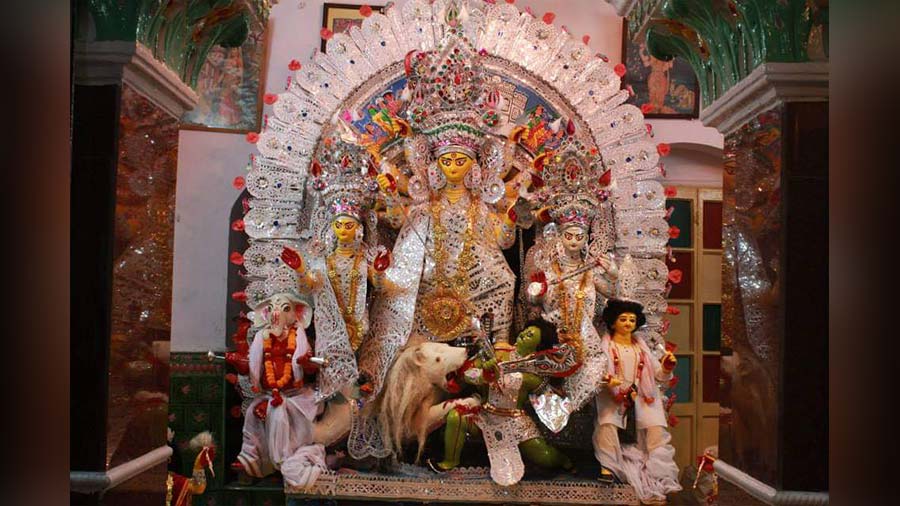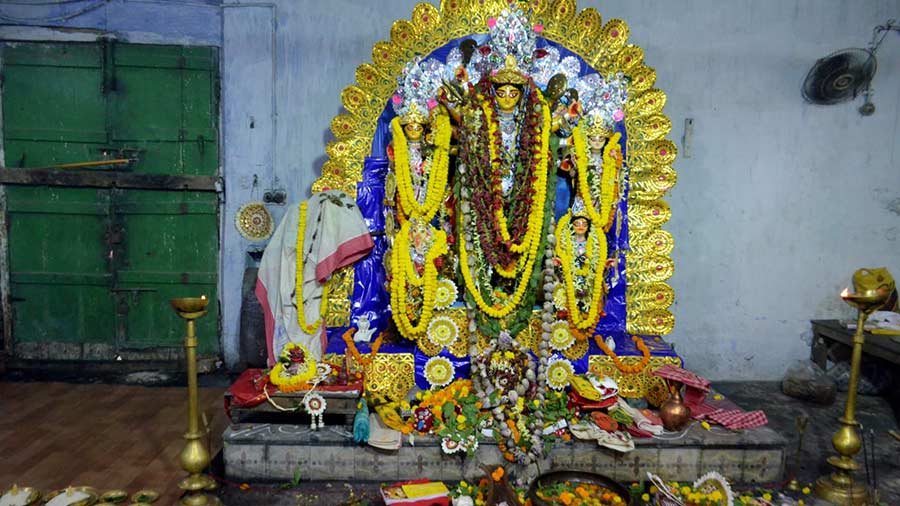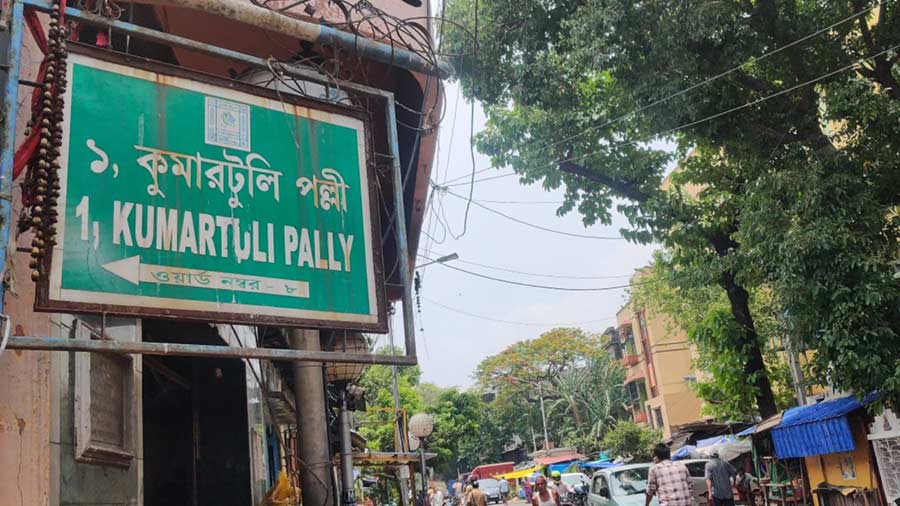One does not quite expect that in a small pocket of the western part of Kolkata, home to only a handful of Hindu families, would be a family Durga Puja with a history of over 100 years. For most, the family puja of Watgunge’s Sahas might indeed be a delightful and surprising find.
Today, the Saha family resides near the port area of Watgunge, but the family puja was started by their ancestor, Bholanath Saha, in his old home at Hem Chandra Street. In 1924, Bholanath, with his five sons, shifted to their present abode on 8, Mohan Chand Palit Road. After his death in 1964, a trust was set up in his name and till now, that trust, along with the contributions from the family members, funds the puja.
The Saha family puja does not deviate from the traditional rites and rituals associated with the festival, and like many old family pujas of Kolkata, is still organised by the family members only. However, the puja witnesses whole-hearted participation and cooperation from the non-Hindu residents of the area as well. For the five days of Durga Puja, the two houses belonging to the Sahas come alive with festive and merriment.
Preparations for the puja begin on Janmashtami, with the worshipping of the kathamo. The next day, the process of making the idol begins within the premises of the Saha house.

Idol-making for the Saha family puja in progress
In the past, the famous sculptor from Krishnanagar, Ram Pal, used to do the job. Today, the third generation, Amar Pal, carries out the task. The chalchitra is painted by the sculptor himself, and by Tritiya, the idol of Goddess Durga gets her eyes and the traditional daker shaaj.

Last touches are put on the ‘chalchitra’
Puja starts from the day of Mahalaya, on the morning of which, the Saha family can be found sitting together, listening to Mahishashura Mardini on the radio. On the day of pratipad, the mangal ghat is set up and the puja starts. From pratipad to Panchami, Devi Durga is offered narus made of coconut and jaggery.
It is from the day of Shasthi that the pace picks up and Saha bari bursts with the spirit of festivity. On this day, the Durga idol is adorned with golden ornaments and by evening, the bodhon is complete. As relatives from different corners of the city, and a few from other parts of India, start arriving to celebrate the puja with the family, the fun and frolic skyrockets.
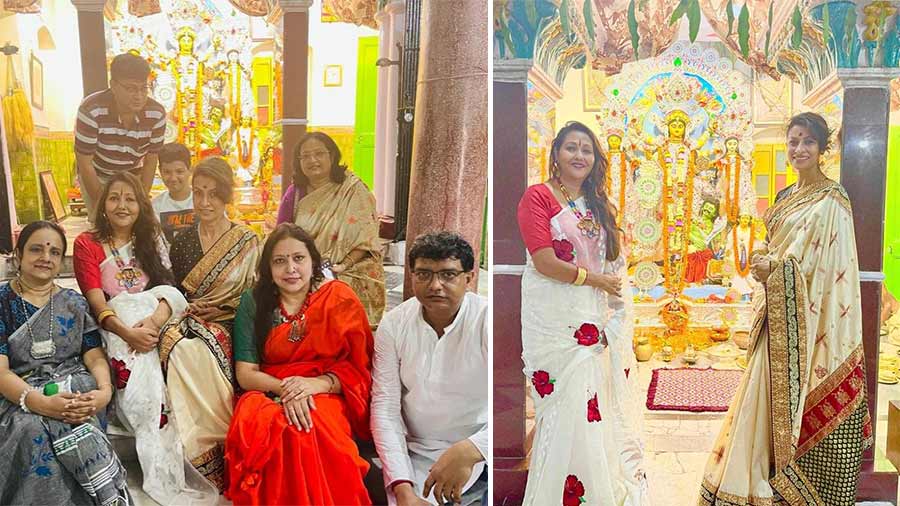
The members of the Saha family pose in front of the idol
Beats of the dhaak announce the break of dawn on Saptami, and soon the family takes the Nabapatrika to Ganga for the ritual snan. The evening is full of adda and everyone, from the elders of the family to the young ones, get their fill of merrymaking.
The Kumari puja on Ashtami is one of the major highlights of the Saha family puja. The women of the family offer puja to a kumari, and apply aalta on her feet. On this day, the idol of Goddess Durga is decked with garlands of lotus and blue Aparajita flowers.
As Ashtami gives way to Navami, the Sandhi Puja begins. A hundred and eight earthen lamps are lit on the durga-dalan, and the entire family comes together and pray for their prosperity and wellbeing.
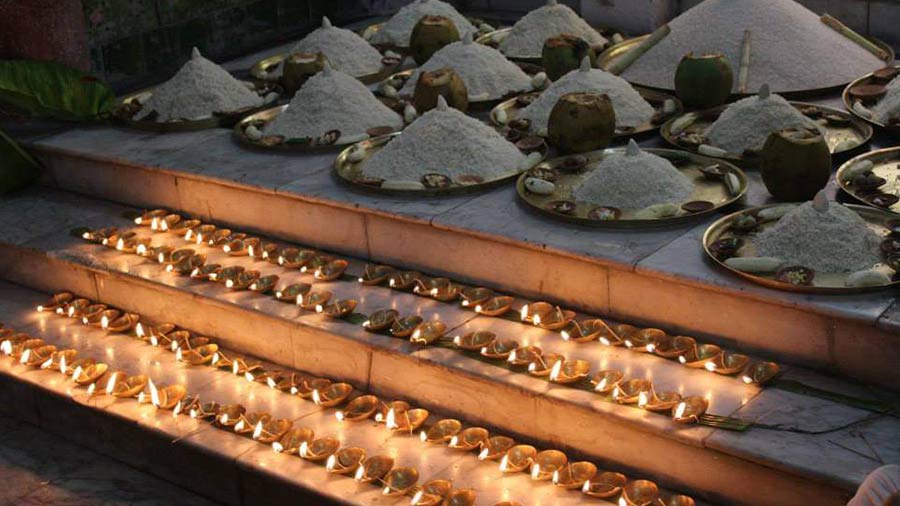
Earthen lamps and other offerings lined on the steps
On this day, the ritual of dhuno purano is also carried out. A woman from the Saha family sits with earthen pots placed on her head and hands, and the pots are then lit with fire. The ritual is believed to be the harbinger of prosperity for the family.
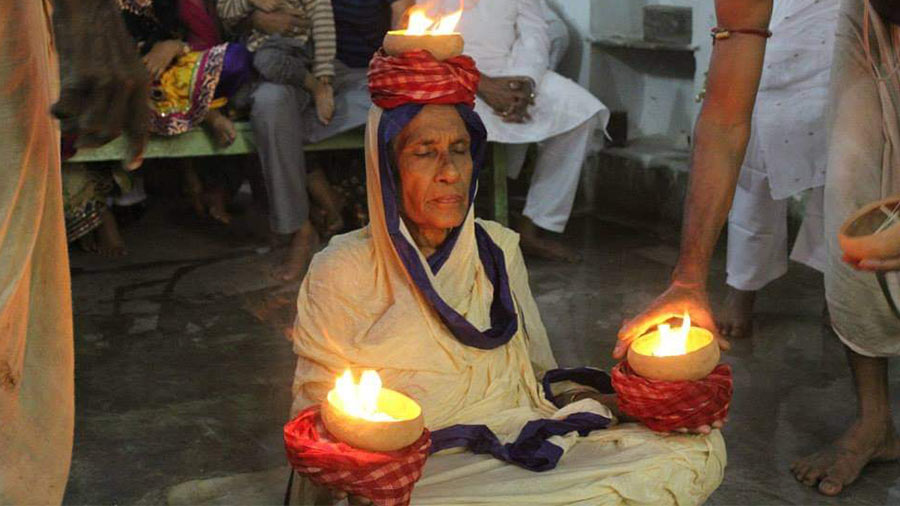
The Navami ritual of ‘dhuno purano’ in progress
Navami is celebrated with the arati of Devi Durga, and the festivities continue till midnight. Bhog is also offered to the goddess on this day. On all four days, lavish vegetarian lunches and dinners are served to all who participate in the puja.
As Dashami inches close, the fun and the excitement of the last four days come to an end. It is now time to bid the beloved goddess goodbye. After sindur khela in the afternoon, the idol is taken to a river for immersion.
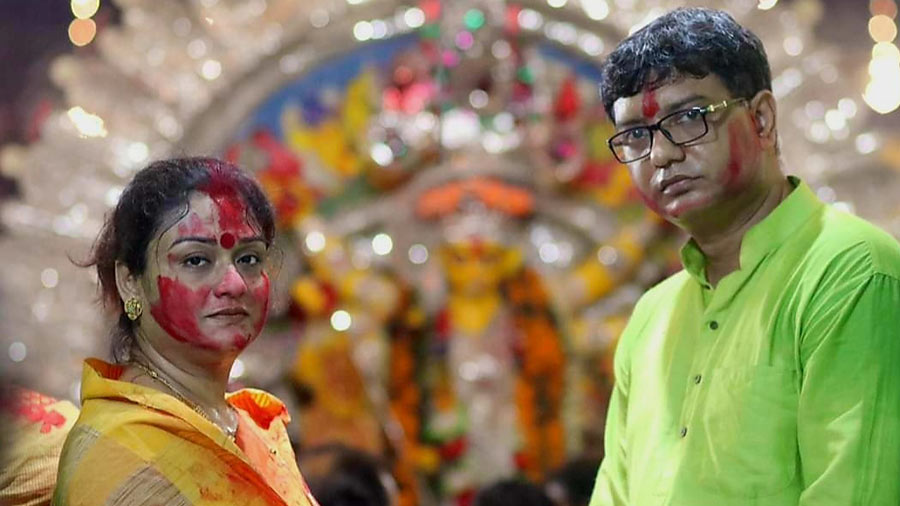
After ‘sindur khela,’ the scene is set for a teary goodbye to the goddess
A small procession of family members, dressed in traditional Bengali attire, accompanies Ma Durga on the journey. The Saha family Durga puja comes to an end for yet another year, but as every Bengali says, ‘aashche bochor abar hobe!’
The future is in good hands
Many old family pujas do not pass the test of time. But that does not seem to be an issue for the Saha family. Rajarshee Saha, a member of the family, is overjoyed while talking about his family puja. Now in his late 40s, he finds no change in the excitement and enthusiasm of the youngsters involved in the puja. “This year too, our big family, with their friends, will come together in our house and we will spend those coveted five days, for which we wait, together.”
